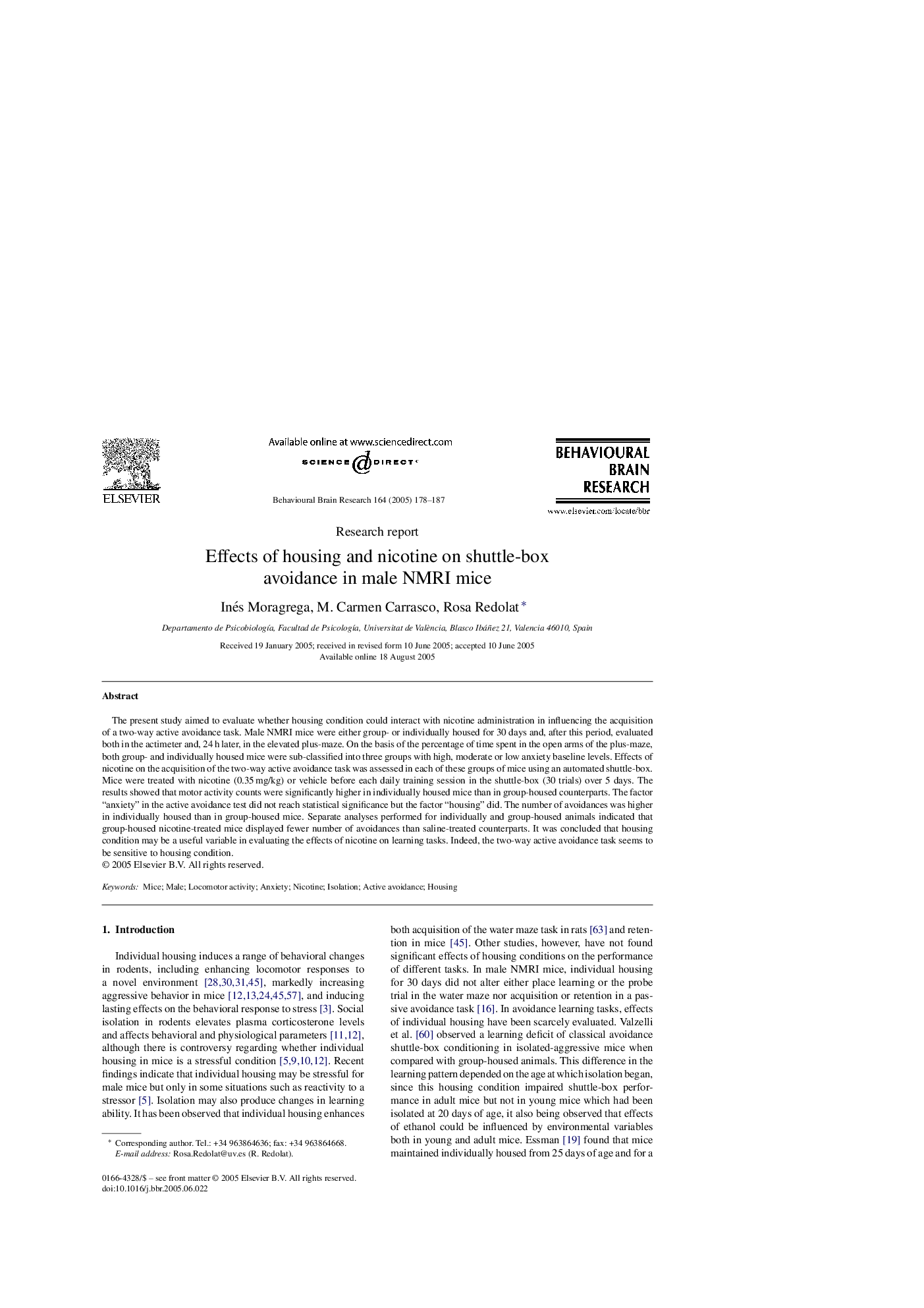| Article ID | Journal | Published Year | Pages | File Type |
|---|---|---|---|---|
| 9406373 | Behavioural Brain Research | 2005 | 10 Pages |
Abstract
The present study aimed to evaluate whether housing condition could interact with nicotine administration in influencing the acquisition of a two-way active avoidance task. Male NMRI mice were either group- or individually housed for 30 days and, after this period, evaluated both in the actimeter and, 24Â h later, in the elevated plus-maze. On the basis of the percentage of time spent in the open arms of the plus-maze, both group- and individually housed mice were sub-classified into three groups with high, moderate or low anxiety baseline levels. Effects of nicotine on the acquisition of the two-way active avoidance task was assessed in each of these groups of mice using an automated shuttle-box. Mice were treated with nicotine (0.35Â mg/kg) or vehicle before each daily training session in the shuttle-box (30 trials) over 5 days. The results showed that motor activity counts were significantly higher in individually housed mice than in group-housed counterparts. The factor “anxiety” in the active avoidance test did not reach statistical significance but the factor “housing” did. The number of avoidances was higher in individually housed than in group-housed mice. Separate analyses performed for individually and group-housed animals indicated that group-housed nicotine-treated mice displayed fewer number of avoidances than saline-treated counterparts. It was concluded that housing condition may be a useful variable in evaluating the effects of nicotine on learning tasks. Indeed, the two-way active avoidance task seems to be sensitive to housing condition.
Related Topics
Life Sciences
Neuroscience
Behavioral Neuroscience
Authors
Inés Moragrega, M. Carmen Carrasco, Rosa Redolat,
